Pre-cooked prime rib offers convenience and quality‚ allowing you to enjoy a tender‚ flavorful roast without extensive cooking time. This guide provides expert reheating methods to maintain its juicy texture and rich flavor‚ ensuring a perfect dining experience every time.
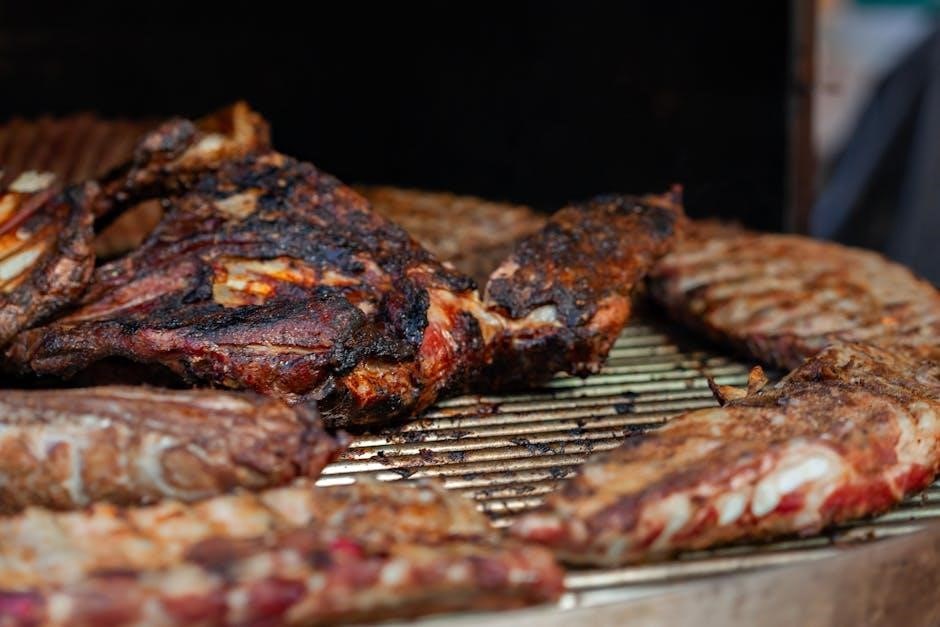
What is Pre-Cooked Prime Rib?
Pre-cooked prime rib is a convenient and flavorful cut of beef that has been partially or fully roasted before purchase. It is typically cooked to medium-rare and seasoned to enhance its rich‚ beefy flavor. This option is ideal for those who want to enjoy a tender‚ juicy prime rib without the effort of cooking it from raw. Pre-cooked prime rib is often sold in grocery stores or butcher shops‚ ready to be reheated at home. Its popularity lies in its ease of preparation while maintaining the high quality and taste of a traditionally cooked prime rib roast.
Benefits of Using Pre-Cooked Prime Rib
Using pre-cooked prime rib offers exceptional convenience‚ making it ideal for busy households or special occasions. It saves time by eliminating the need for lengthy cooking processes‚ allowing you to focus on other dishes or preparations. Pre-cooked prime rib ensures consistent results‚ as it is already roasted to perfection‚ reducing the risk of overcooking or undercooking. Additionally‚ it reduces stress during events‚ as it can be quickly reheated to serve a crowd. The meat remains juicy and flavorful‚ and its pre-cooked nature allows for easy portion control and versatility in serving options‚ making it a practical and delicious choice for any meal.
Food Safety and Preparation
Always store pre-cooked prime rib in the refrigerator at 40°F or below to prevent bacterial growth. Reheat to an internal temperature of 130°F for food safety and optimal flavor retention.
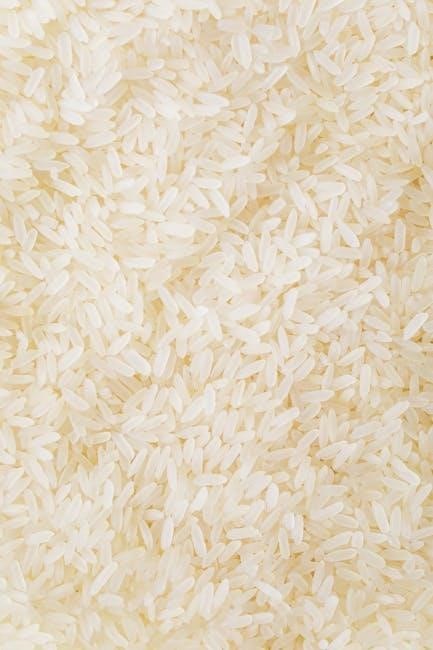
Proper Storage Before Reheating
Pre-cooked prime rib should be stored in the refrigerator at a temperature of 40°F or below to ensure food safety. Always keep it in an airtight container or wrapped tightly in plastic wrap or aluminum foil. If frozen‚ thaw in the refrigerator overnight before reheating. Never thaw at room temperature‚ as this can lead to bacterial growth. Stored properly‚ pre-cooked prime rib can be kept in the fridge for up to 3-4 days. Always check for any signs of spoilage before reheating‚ such as an off smell or slimy texture. Proper storage ensures the meat remains fresh and ready for a delicious meal.
Thawing Instructions
Thawing pre-cooked prime rib requires careful planning to ensure food safety and quality. For refrigerated thawing‚ place the prime rib in its original packaging or a sealed bag on the middle or bottom shelf of the refrigerator. Allow 24 hours of thawing time for every 4-5 pounds of meat. For faster thawing‚ submerge the prime rib in cold water‚ changing the water every 30 minutes. This method takes about 30 minutes per pound. Never thaw at room temperature‚ as this can lead to bacterial growth. Once thawed‚ cook immediately or refrigerate until reheating. Always keep the meat sealed to prevent moisture loss and contamination during thawing.
Tools and Equipment Needed
Essential tools include an oven‚ roasting pan‚ wire rack‚ aluminum foil‚ and an instant-read thermometer for precise temperature control during reheating.
Oven and Baking Essentials
Reheating pre-cooked prime rib in the oven requires a few essential tools. A sturdy roasting pan with a rack is ideal for even heating and air circulation. Aluminum foil is necessary to cover the meat‚ preventing it from drying out. Preheating the oven to 250-300°F (120-150°C) ensures a low-and-slow reheating process. A wire rack elevates the prime rib‚ allowing heat to circulate evenly. An instant-read thermometer is crucial for monitoring the internal temperature‚ ensuring it reaches 130-135°F (54-57°C) for medium-rare. These tools work together to maintain the prime rib’s tenderness and flavor during reheating.
Optional: Steamer or Microwave
A steamer or microwave can be used for reheating pre-cooked prime rib‚ offering quick and convenient alternatives to oven methods. For steaming‚ place slices in a steamer basket over boiling water with beef broth for added flavor. Cover and steam for 5-10 minutes‚ ensuring the meat stays moist. In the microwave‚ wrap slices in a damp paper towel and heat on medium power (around 50% intensity) for 20-30 seconds per slice. Check internal temperature and adjust heating time as needed. Both methods are ideal for smaller portions‚ providing a fast way to reheat without compromising tenderness or flavor.
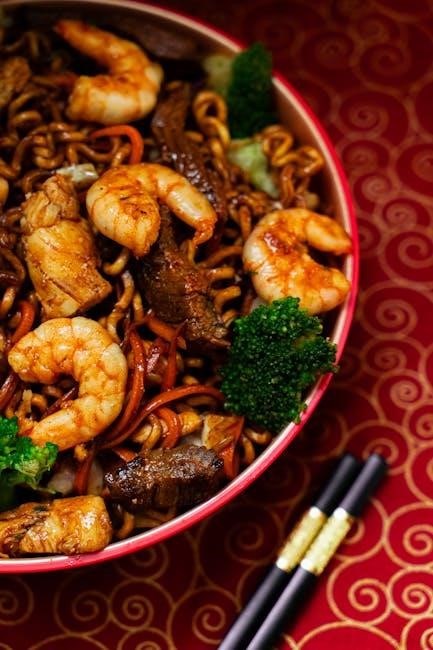
Reheating Methods
Pre-cooked prime rib can be reheated using ovens‚ steamers‚ or microwaves‚ each offering unique advantages for maintaining tenderness and flavor. Choose the method that best suits your needs.
Oven Reheating: Step-by-Step Guide
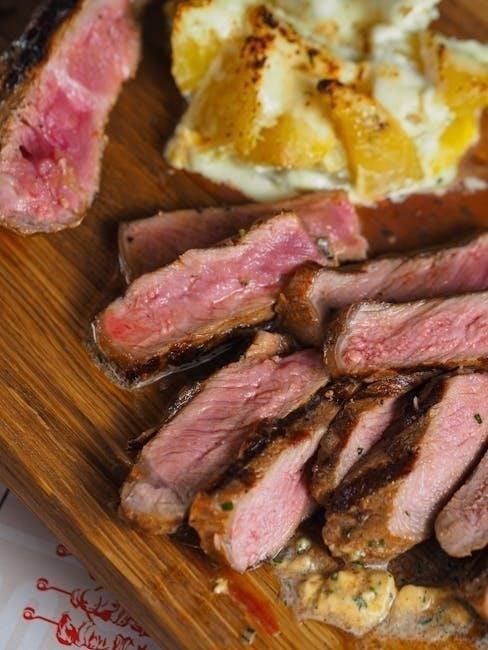
Preheat your oven to 250°F (120°C) for a low-and-slow reheating method. Place the pre-cooked prime rib on a wire rack over a baking sheet‚ ensuring air circulates evenly. Wrap the meat loosely in aluminum foil to retain moisture. For whole roasts‚ reheat for 15-20 minutes per pound‚ or until the internal temperature reaches 130°F (54°C) for medium-rare. For slices‚ arrange them on a parchment-lined tray and heat for 10-15 minutes. Use an instant-read thermometer to check doneness. Avoid overcooking to keep the meat juicy. Let the prime rib rest for 5-10 minutes before slicing to ensure tenderness and flavor retention.
Steaming Method for Moisture Retention
Steaming is an excellent way to reheat pre-cooked prime rib while preserving its moisture and flavor. Start by bringing water to a boil in a large pot with a steamer basket. Place the prime rib slices or whole roast in the basket‚ ensuring they are not overcrowded. Cover the pot with a tight-fitting lid to trap steam. Steam for 10-15 minutes for slices or 20-25 minutes for a whole roast‚ until the internal temperature reaches 130°F (54°C) for medium-rare. This method ensures even heating and retains the meat’s tenderness. Let it rest for 5 minutes before slicing to lock in juices and flavor.
Microwave Reheating: Quick Option
For a quick and convenient method‚ microwave reheating is ideal for pre-cooked prime rib slices. Place the slices on a microwave-safe dish‚ leaving space between them for even heating. Cover with plastic wrap or a microwave-safe lid to retain moisture. Heat on medium-low power (around 30-40% of full power) for 30 seconds per slice‚ checking and flipping as needed. Avoid overheating‚ as this can dry out the meat. Use a meat thermometer to ensure the internal temperature reaches 130°F (54°C) for medium-rare. Let the prime rib rest for a minute before serving. While fast‚ this method may not match oven-quality results but works well for small portions.
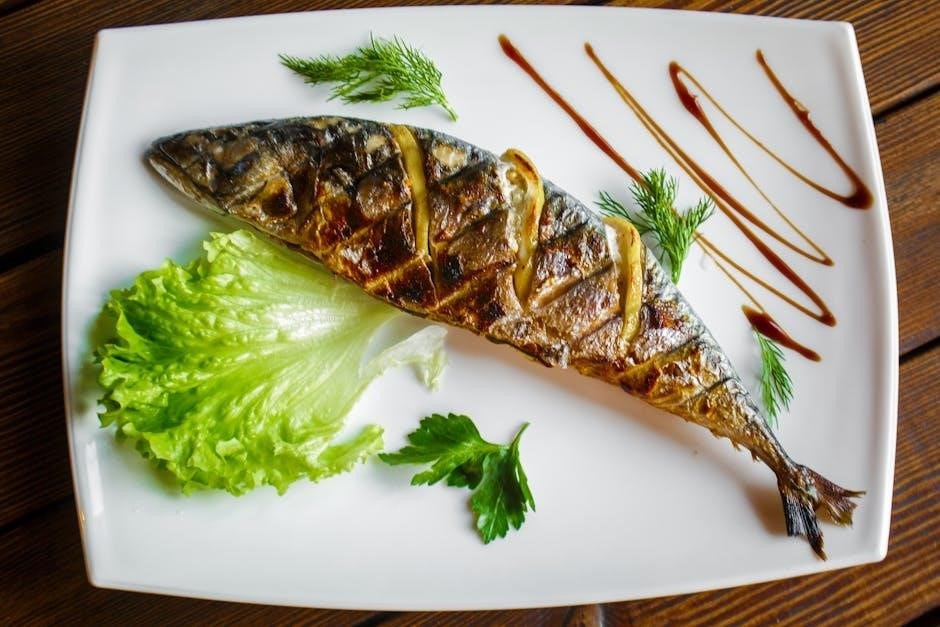
Pro Tips for Perfect Results
Use low heat to prevent drying‚ wrap in foil for moisture retention‚ and let the prime rib rest before slicing. Ensure internal temperature reaches 130°F for medium-rare perfection.
Importance of Internal Temperature
Monitoring internal temperature is crucial for achieving perfectly reheated prime rib. Aim for 130°F to 135°F for medium-rare to ensure juiciness and flavor retention. Use a meat thermometer to check the thickest part of the roast‚ avoiding fat or bone. Proper temperature control prevents overcooking and maintains tenderness. Letting the meat rest after reheating allows juices to redistribute‚ enhancing texture. Consistent heating methods‚ like using foil in the oven‚ help retain moisture and promote even warming. Additionally‚ reaching a safe internal temperature ensures food safety‚ preventing bacterial growth during reheating. This step guarantees a delicious‚ safe‚ and high-quality dining experience every time.
Slicing and Resting the Meat
Slicing and resting are key steps to ensure your pre-cooked prime rib remains tender and flavorful. After reheating‚ let the meat rest for 10-15 minutes before slicing to allow juices to redistribute evenly. Use a sharp knife to slice against the grain for the most tender results. Thin‚ even slices help maintain consistency in texture and flavor; Resting prevents juices from escaping‚ keeping the meat moist and delicious. Proper slicing also enhances presentation‚ making it ideal for serving at special occasions. This step ensures every bite is as enjoyable as the first‚ delivering the full richness of the prime rib experience.
Common Mistakes to Avoid
When reheating pre-cooked prime rib‚ avoid common mistakes that can dry out the meat or compromise its flavor. Overheating is a major error‚ as it can make the rib tough and lose its tenderness. Always use a meat thermometer to ensure the internal temperature doesn’t exceed 135°F for medium-rare. Another mistake is skipping the resting period after reheating‚ which allows juices to redistribute. Slicing too soon can result in a loss of moisture. Additionally‚ improper storage before reheating‚ such as leaving it at room temperature for too long‚ can lead to food safety issues. Avoid these pitfalls to enjoy a perfectly reheated‚ juicy prime rib.
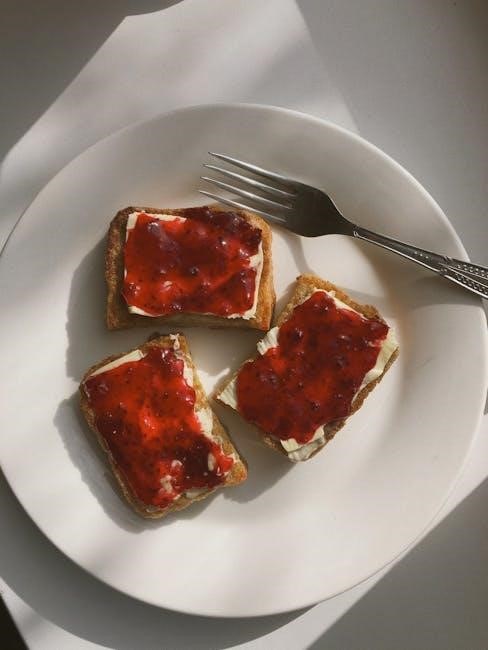
Serving Suggestions
Pre-cooked prime rib is a versatile dish that pairs perfectly with a variety of sides and sauces. Serve it with a rich au jus for dipping to enhance its flavorful profile. Pair it with roasted vegetables like asparagus‚ Brussels sprouts‚ or garlic mashed potatoes for a hearty meal. Horseradish sauce or béarnaise are excellent condiments to complement the roast. For a more casual setting‚ slice the prime rib thinly and use it in sandwiches or wraps. Leftover prime rib can also be added to soups‚ stews‚ or salads for a protein-packed dish. Garnish with fresh herbs like rosemary or thyme for a elegant presentation.
Reheating pre-cooked prime rib is a straightforward process that guarantees a delicious‚ stress-free dining experience. By following the low-and-slow method or using a steamer‚ you can achieve tender‚ juicy results every time. Remember to monitor the internal temperature to ensure food safety and optimal flavor. Pair your prime rib with au jus‚ horseradish sauce‚ or roasted vegetables for a memorable meal. Whether you’re hosting a special occasion or enjoying a cozy dinner‚ pre-cooked prime rib offers convenience without compromising on quality. Experiment with different serving styles and sides to elevate your culinary skills and impress your guests effortlessly.